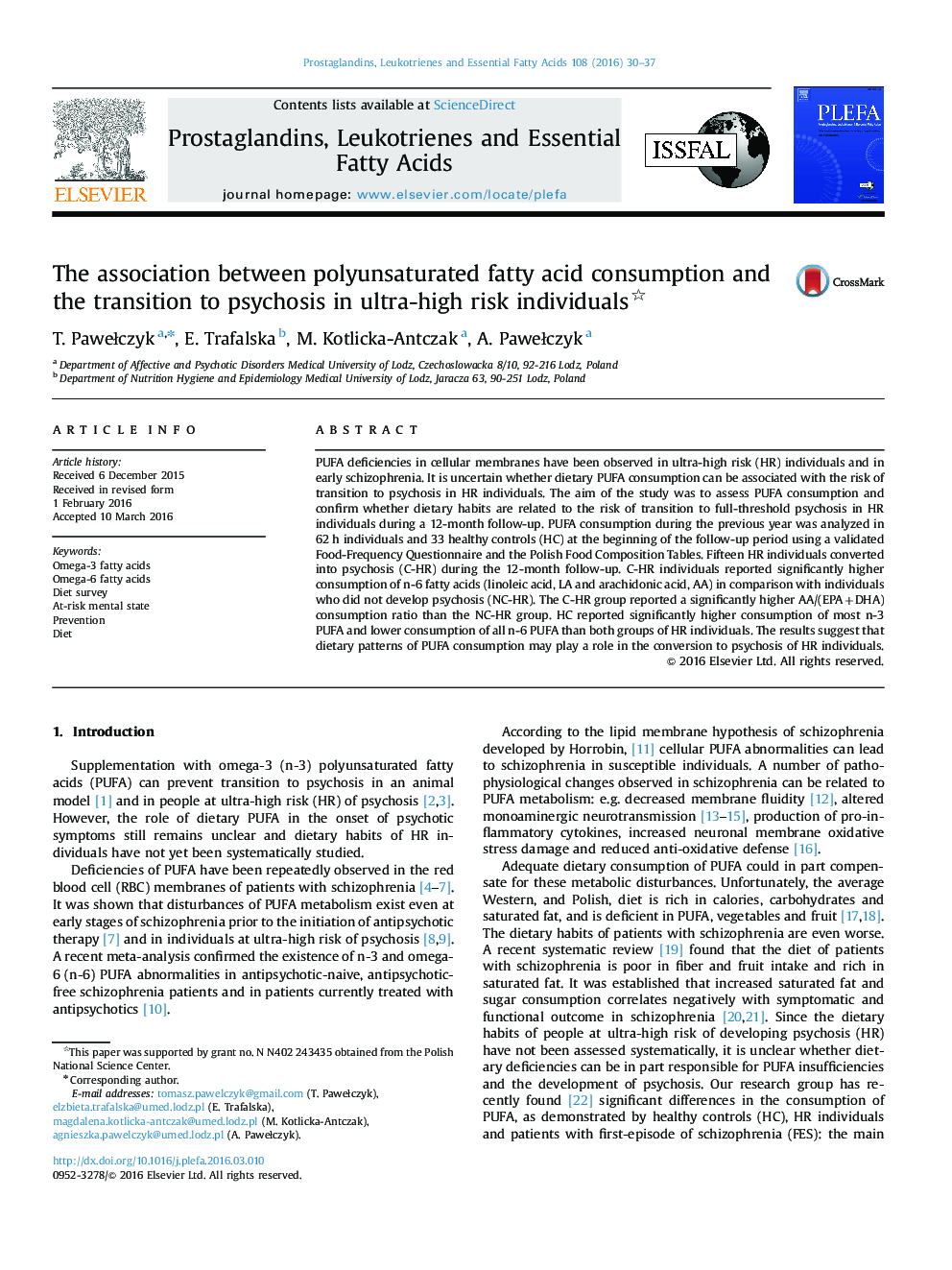| Article ID | Journal | Published Year | Pages | File Type |
|---|---|---|---|---|
| 2777468 | Prostaglandins, Leukotrienes and Essential Fatty Acids (PLEFA) | 2016 | 8 Pages |
•HR converters declared higher consumption of n-6 PUFA than HR non-converters and higher. consumption of linoleic acid and arachidonic acid.•HR converters showed higher AA/(EPA+DHA) ratio than HR non-converters.•Healthy controls declared higher consumption of n-3 PUFA than HR individuals.•Healthy controls showed lower AA/(EPA+DHA) ratio than HR individuals.
PUFA deficiencies in cellular membranes have been observed in ultra-high risk (HR) individuals and in early schizophrenia. It is uncertain whether dietary PUFA consumption can be associated with the risk of transition to psychosis in HR individuals. The aim of the study was to assess PUFA consumption and confirm whether dietary habits are related to the risk of transition to full-threshold psychosis in HR individuals during a 12-month follow-up. PUFA consumption during the previous year was analyzed in 62 h individuals and 33 healthy controls (HC) at the beginning of the follow-up period using a validated Food-Frequency Questionnaire and the Polish Food Composition Tables. Fifteen HR individuals converted into psychosis (C-HR) during the 12-month follow-up. C-HR individuals reported significantly higher consumption of n-6 fatty acids (linoleic acid, LA and arachidonic acid, AA) in comparison with individuals who did not develop psychosis (NC-HR). The C-HR group reported a significantly higher AA/(EPA+DHA) consumption ratio than the NC-HR group. HC reported significantly higher consumption of most n-3 PUFA and lower consumption of all n-6 PUFA than both groups of HR individuals. The results suggest that dietary patterns of PUFA consumption may play a role in the conversion to psychosis of HR individuals.
